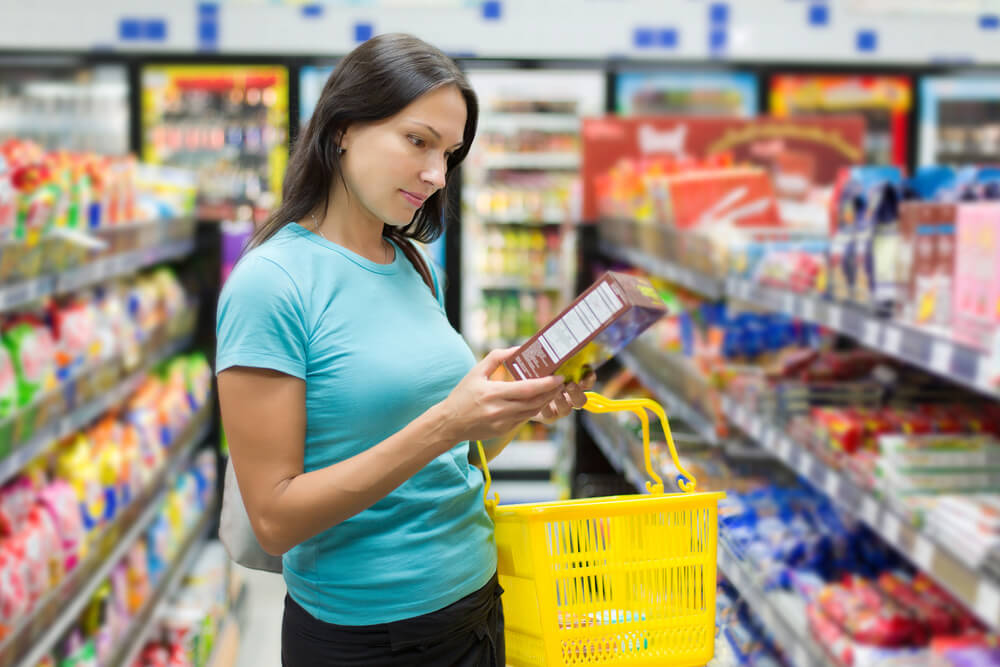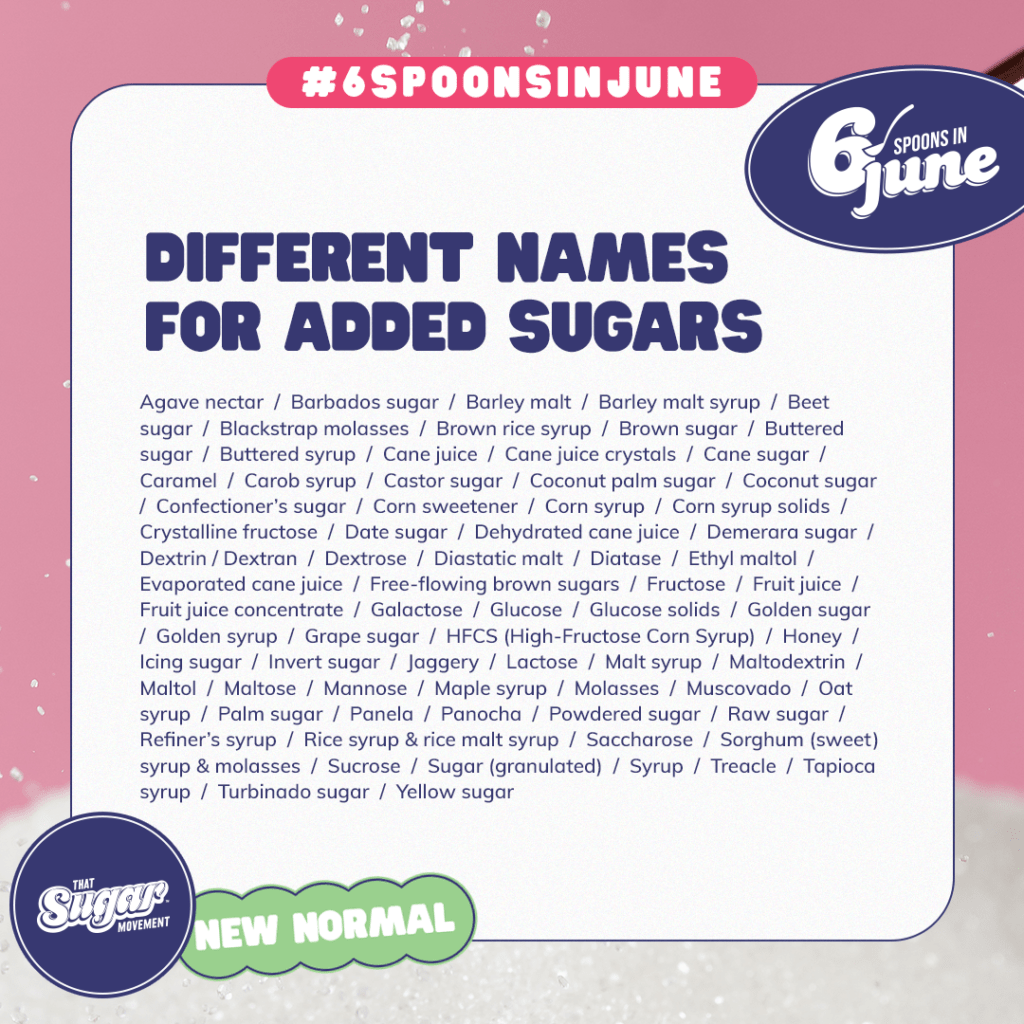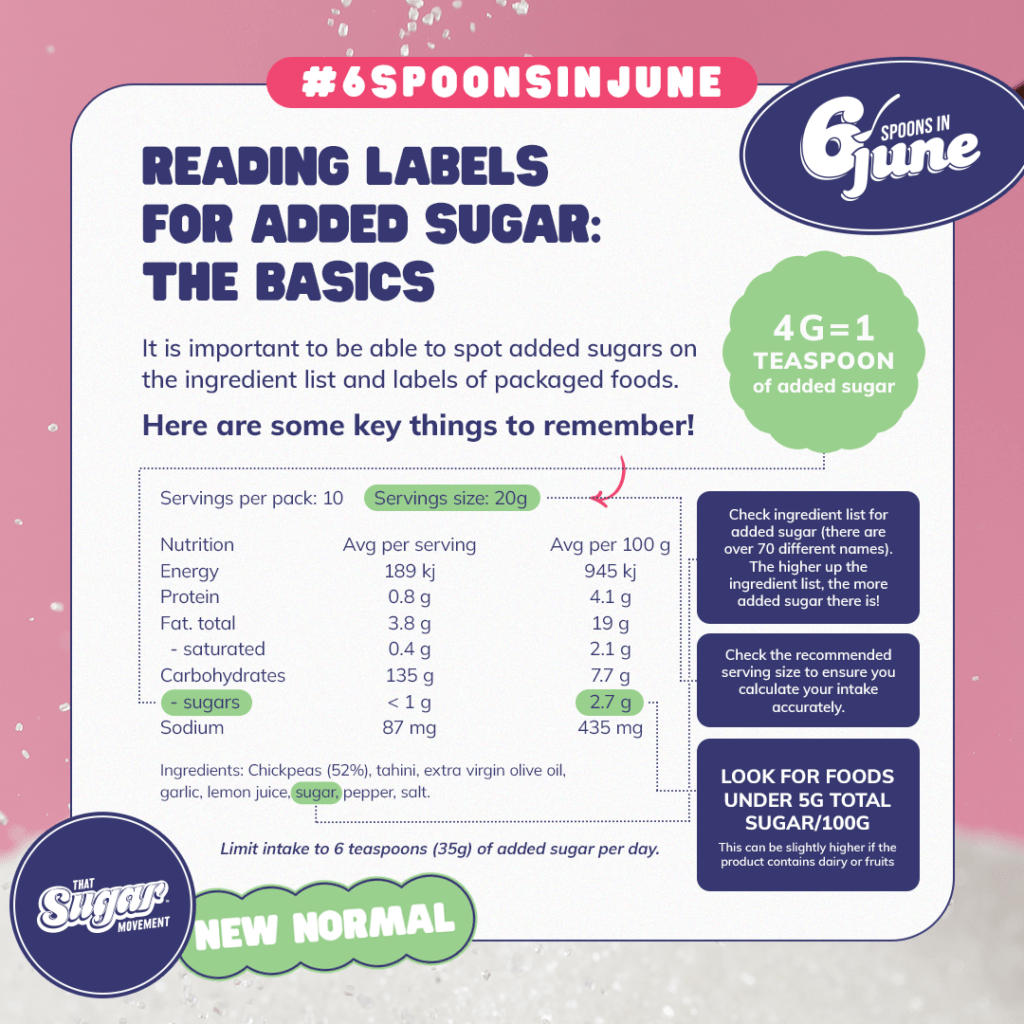Blog
How to read labels for added sugar

Most Aussies are consuming too much added and free sugar. Recommendations are to limit daily intake to 6 teaspoons (25g), yet some are having at least 38 teaspoons of free sugars per day!
Too much added and free sugar can lead to short- and long-term health concerns, so it is important to keep intake in check.
What are the simplest ways to get added and free sugar intake down?
Primarily, eat mostly real, whole foods. Doing this, you inadvertently eat less added sugar.
Second to that, when consuming packaged food and drink, make an informed choice. Look past the clever marketing and fancy health claims on the packaging and learn how to read labels and identify added sugars. Here is our three-step guide on how!
One: Look for foods under 5g total sugar/100g
In Australia, the Nutrition Information Panel (NIP) on the back of food and drink packaging lists total sugars content. It does not separate intrinsic sugars from added sugars. Yet, it is the added sugars – not those that are intrinsic or naturally-occurring in whole foods – that we are concerned with. Until labelling requirements require added and free sugars to be listed separately from total sugars, for now remember:
- Naturally-occurring sugars from whole foods, such as whole fruit or dairy, are not considered an added sugar, and not what we are focusing on limiting (unless you have a health concern that requires you to).
- Lactose is the naturally occurring sugar in dairy. Amounts of lactose in dairy products vary – there is little in hard cheeses, but more in milk and yoghurt. On average milk and yoghurt, contains 4-5g (roughly 1 teaspoon) of lactose per 100g. If the label lists much over this, there is a good chance the remaining sugar is added.
- Reading the ingredient list will indicate if and how much sugar or sweetener has been added to the product, which brings us to our next point.
Two: Check the ingredient list
As you can see by the list we’ve created below, there are many, many different names for added sugars. This can be a daunting prospect to recall!

When scouring the ingredient list, the key things to keep in mind are:
- The higher up the ingredient is on the list, the more added sugar there is. Ingredients are listed in order of quantity, so if you see a sugar lingering in first few ingredients, chances are the product is pretty high in added sweet stuff.
- Words such as ‘sugar’, ‘syrup’, ‘juice’, ‘concentrate’ or even ‘crystals’ one should be wary of.
- Words ending in ‘-ose’ like glucose, fructose, dextrose or sucrose that are listed on a label are added sugars. Note: if they are naturally occurring, like glucose in whole fruit, it won’t be listed as an ingredient.
Three: Remember that 4g = 1 teaspoon of sugar
Technically, 4.2g = 1 teaspoon of sugar, but for the easy on-the-spot calculation, just remember 4g equals one teaspoon. For example, a 375ml can of Coca-Cola is about 40g of sugar. Dividing that by 4 means there are 10 teaspoons of added sugar in the one can.

As mentioned above, we want to aim for limiting intake of added sugar 6 teaspoons per day. That is 25g and is recommended by the WHO for optimal health.
Happy label reading!
By Angela Johnson (BHSc Nut Med)











